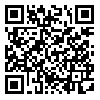Volume 11 - پاییز و زمستان 87-
mjms 2009, 11 - پاییز و زمستان 87-: 1-7 |
Back to browse issues page
Download citation:
BibTeX | RIS | EndNote | Medlars | ProCite | Reference Manager | RefWorks
Send citation to:



BibTeX | RIS | EndNote | Medlars | ProCite | Reference Manager | RefWorks
Send citation to:
Kazemi Arababadi M, Pourfathollah A A, Jafarzadeh A, Hassanshahi G, Afrooz M R, Hadadian M. Occult HBV infection in Rafsanjanese blood donors. mjms 2009; 11 :1-7
URL: http://mjms.modares.ac.ir/article-30-3265-en.html
URL: http://mjms.modares.ac.ir/article-30-3265-en.html
Mohammad Kazemi Arababadi  1, Ali Akbar Pourfathollah2
1, Ali Akbar Pourfathollah2  , Abdollah Jafarzadeh3
, Abdollah Jafarzadeh3  , Gholamhossein Hassanshahi4
, Gholamhossein Hassanshahi4  , Mohammad Reza Afrooz5
, Mohammad Reza Afrooz5  , Mahmood Hadadian5
, Mahmood Hadadian5 
 1, Ali Akbar Pourfathollah2
1, Ali Akbar Pourfathollah2  , Abdollah Jafarzadeh3
, Abdollah Jafarzadeh3  , Gholamhossein Hassanshahi4
, Gholamhossein Hassanshahi4  , Mohammad Reza Afrooz5
, Mohammad Reza Afrooz5  , Mahmood Hadadian5
, Mahmood Hadadian5 
1- Instructor, Department of Microbiology, Immunology and Hematology, Faculty of Medicine, Rafsanjan University of Medical Sciences, Rafsanjan, Iran
2- Professor, Department of Immunology, School of Medical Sciences, Tarbiat Modares University, Tehran, Iran
3- Associated Professor, Department of Immunology, Faculty of Medicine, Rafsanjan University of Medical Sciences, Rafsanjan, Iran
4- Assistant Professor, Department of Hematology, Faculty of Medicine, Rafsanjan University of Medical Sciences, Rafsanjan, Iran
5- B.Sc., Iranian Blood Transfusion Organization, Rafsanjan Center, Rafsanjan, Iran
2- Professor, Department of Immunology, School of Medical Sciences, Tarbiat Modares University, Tehran, Iran
3- Associated Professor, Department of Immunology, Faculty of Medicine, Rafsanjan University of Medical Sciences, Rafsanjan, Iran
4- Assistant Professor, Department of Hematology, Faculty of Medicine, Rafsanjan University of Medical Sciences, Rafsanjan, Iran
5- B.Sc., Iranian Blood Transfusion Organization, Rafsanjan Center, Rafsanjan, Iran
Abstract: (10142 Views)
Objective: Occult hepatitis B infection is a form of hepatitis in which despite of absence of detectable HBsAg, HBV-DNA is present in peripheral blood of patients. This clinical form of B hepatitis creates some problems for the Iranian blood transfusion services. Therefore, the aim of this study was the evaluation of status of occult hepatitis B infection in the Rafsanjanese blood donors.
Materials and Methods: In this cross-sectional study, total of 3700 blood donor samples were collected and tested for HBsAg and anti-HBs using ELISA. The HBsAg negative and anti-HBc positive samples were selected and screened for HBV-DNA using PCR.
Results: Results of current study indicated that 352 (9.5%) of 3700 blood samples were HBsAg– and anti-HBc+. HBV-DNA was detected in 57 (16.1% of HBsAg– and anti-HBc+ and 1.54% of total samples) samples.
Conclusion: Results of this study are in agreement with our previous studies in the prevalence of OBI. Therefore, it seems that occult hepatitis B infection rate is high in the Iranian blood donors and probably is one of the main causes of post-transfusion hepatitis.
Received: 2009/01/3 | Accepted: 2009/01/3
| Rights and permissions | |
 |
This work is licensed under a Creative Commons Attribution-NonCommercial 4.0 International License. |






